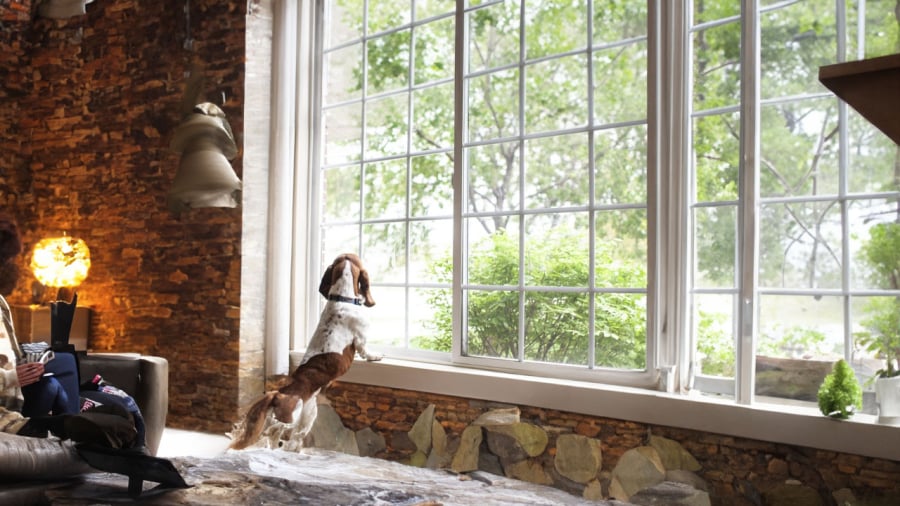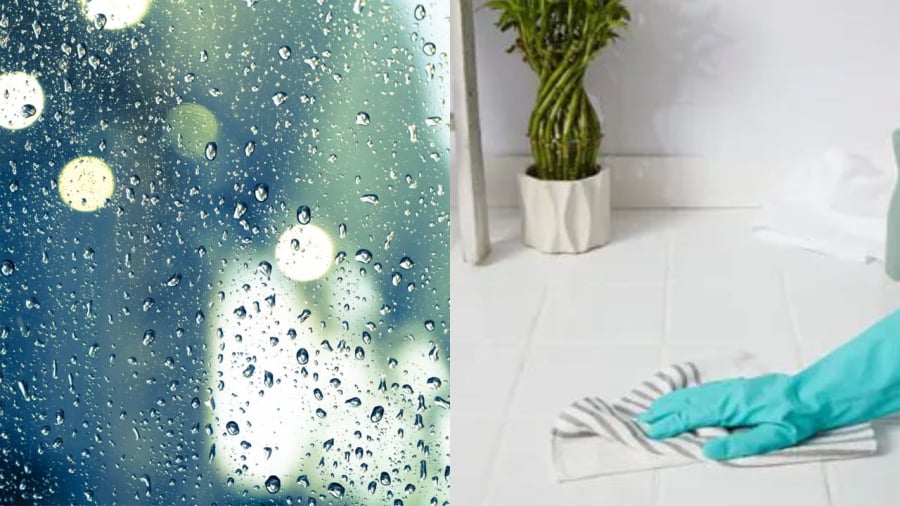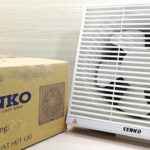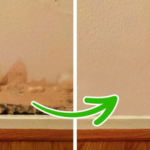Damp and wet weather conditions promote the growth of mold and bacteria, causing your house to become musty and stuffy. Here are some tips to make your house more ventilated:
Dehumidify the wardrobe
Closed wardrobes have the chance to accumulate moisture and produce odors, especially clothes wardrobes. Synthetic materials, such as leather and nylon, retain water and create mold. Remember to place a dehumidifier or moisture absorbers in the wardrobe, such as hanging a moisture-absorbing bag between hangers and placing one inside a leather bag to maintain a dry environment effectively.
When the weather is too humid, you should regularly open the wardrobe to dehumidify. To add fragrance to the clothes and utility cabinets, place coffee packs or menthol jars to make them smell better and to kill bacteria.

Ensure ventilation in the bedroom
Bedsheets, mattresses, and cotton pillows are the most moisture-absorbing areas, they not only absorb human sweat but also the humidity in the air. When the weather is sunny and dry, you should open the bedroom door to take advantage of drying the room. Remember to remove the bedsheets to avoid prolonged moisture accumulation, prop the bedsheet against the wall instead. Drying the blanket using a blanket dryer or under sunlight. If the bed frame has drawers, they are prone to moisture accumulation, so place a moisture absorber pack in the drawer under the bed to prevent dampness. In the bedroom, you can also place a bowl of sea salt to dehumidify and kill bacteria.
Dehumidify clothes on rainy days
When drying clothes on rainy days, no matter how strong you hang them, they will still not dry and have a musty smell, which is the source of the odor in the house. The problem with drying clothes on rainy days is that the surrounding humidity is too high, so install a dehumidifier below the clothes drying area. To dry clothes indoors, you should also choose closed environments such as a clothes drying room, living room, or bedroom. Use a dehumidifier to dry clothes in a small space for better efficiency.

Build a roof to hang clothes on the balcony, doorstep, avoid hanging too many clothes indoors, which will increase the humidity in the house. You should also know that mold, dampness can occur in the washing machine, if the washing machine is not clean, no matter how you wash the clothes, they will easily have a musty smell. After each drying, you should take out the detergent box and dust box to clean and dry them to avoid mold. As for the washing machine drum, pour specialized detergent into the drum, turn on the washing mode to clean the dirt and mold residue in the drum so that the clothes after washing no longer have a musty smell.
Use charcoal to dehumidify
Charcoal has a high moisture-absorbing property, so you can place it in the corners of the house to help dehumidify. Of course, you should not burn charcoal indoors as it will cause CO2 suffocation.
Utilize moisture-absorbing plants
Closed wardrobes, especially those for clothes, can trap moisture and produce odors. To prevent this, use dehumidifiers or moisture absorbers. Hang moisture-absorbing bags between hangers and place them inside leather bags. If the weather is too humid, regularly open the wardrobe to air it out and consider using coffee packs or menthol jars to add fragrance and inhibit bacteria.
Bedsheets, mattresses, and cotton pillows absorb sweat and humidity, so take advantage of sunny and dry weather to air out the bedroom. Remove bedsheets to prevent prolonged moisture accumulation and prop them against a wall to dry. Dry blankets using a blanket dryer or sunlight. If your bed frame has drawers, place moisture absorber packs inside to prevent dampness. You can also use a bowl of sea salt to dehumidify and inhibit bacteria.
The high humidity on rainy days can make it challenging to dry clothes. Install a dehumidifier below the clothes drying area to reduce moisture. Opt for closed environments, such as a dedicated drying room, living room, or bedroom, for indoor drying. Using a dehumidifier in a small space will further enhance drying efficiency.
Build a roof on your balcony or doorstep to hang clothes and avoid increasing indoor humidity. Mold and dampness can also occur in your washing machine, so it’s important to maintain it. After each load of laundry, remove and dry the detergent and dust boxes to prevent mold. Clean the washing machine drum by running it with specialized detergent to eliminate dirt and mold residue, ensuring your clothes come out fresh.
Yes, charcoal has a high moisture-absorbing property and can be placed in the corners of your house to help with dehumidification. However, do not burn charcoal indoors as it can cause CO2 suffocation.
Utilize moisture-absorbing plants, which can help regulate humidity levels in your home naturally.
Why Is the Refrigerator Smelling Bad and What Are the Consequences?
If you’re experiencing a strange smell coming from your refrigerator, it can be a sign that something may be off. Not only is it a nuisance, but it can also adversely impact the quality of your foods. Here’s an exploration of the various causes of this issue, as well as some strategies to get rid of the smell.






































